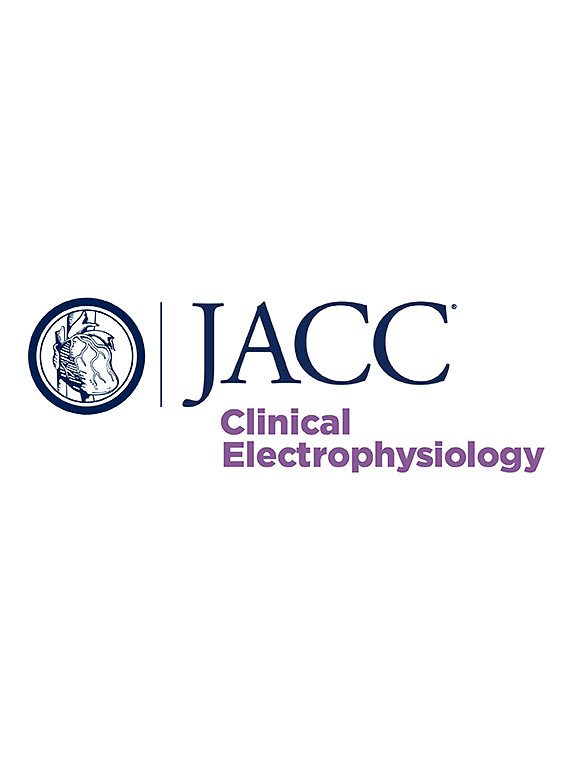Shorter Premature Atrial Complex Coupling Interval Leads to Mechanical Dysfunction, Fibrosis, and AF in Swine
IF 7.7
1区 医学
Q1 CARDIAC & CARDIOVASCULAR SYSTEMS
引用次数: 0
Abstract
Background
We have previously shown that dyssynchronous premature atrial complexes (PACs) from the lateral left atrium (LA) lead to greater atrial mechanical dysfunction, remodeling, and sustained atrial fibrillation (AF) than synchronous PACs from the interatrial septum. However, the impact of PAC coupling interval (CI) on atrial remodeling is unclear.
Objectives
This study sought to explore the effect of PAC CI on atrial mechanics and remodeling in the swine model.
Methods
A 2-phase in vivo study was conducted. In the phase 1 acute study, 5 swine underwent acute invasive hemodynamics and echocardiography while delivering single-paced atrial extrastimuli with CIs varying from 450 ms to 200 ms. Peak LA longitudinal strain and intra-LA dyssynchrony were assessed with 2-dimensional strain echocardiography while LA and aortic pressure were directly measured. In the phase 2 chronic study, a group exposed to paced bigeminy from the lateral LA for 16 weeks with a short CI of 250 ms (Short-PAC, n = 10) was compared with groups with PACs at a long CI of 400 ms (Long-PAC, n = 5) and a nonpaced control group (CTRL, n = 10). Detailed electrophysiology and echocardiography studies were performed with histologic quantification of LA fibrosis at baseline and prior to sacrifice.
Results
Phase 1 revealed that as PAC CI shortened, peak LA strain decreased (P = 0.003) and LA dyssynchrony increased (P < 0.001). Phase 2 showed that after 16 weeks of PACs, the Short-PAC group had greater LA dilation (terminal baseline: 5.9 ± 1.2 cm2 vs Long-PAC 3.9 ± 0.5 cm2 vs CTRL 0.9 ± 0.4 cm2; P < 0.001) and reduced peak LA strain during sinus rhythm (terminal baseline: −17.3% ± 3.2% vs Long-PAC −12.1% ± 2.1% vs CTRL −0.7% ± 4.2%; P < 0.001). The short-PAC group had a more LA fibrosis (8.6% ± 1.0% vs Long-PAC 6.8% ± 1.0% vs CTRL 4.0% ± 1.5%; P < 0.001) and higher AF inducibility (terminal baseline: 49.3% ± 13.0% vs Long-PAC 29.0% ± 6.4% vs CTRL 2.2% ± 16.2%; P < 0.001) than the other groups.
Conclusions
In this swine model, shorter PAC CI led to increased acute atrial mechanical dysfunction and dyssynchrony. Chronically, short-CI PACs led to greater atrial fibrosis and induced AF, suggesting that frequent, short-coupled PACs pose the highest risk for LA myopathy and AF. These insights underscore the importance of understanding the impact of PAC characteristics on atrial remodeling and arrhythmogenesis.
较短的过早心房复极耦合间期会导致猪的机械功能障碍、纤维化和房颤。
背景:我们之前已经证明,与来自房间隔的同步房性早搏(PAC)相比,来自侧左房(LA)的不同步房性早搏(PAC)会导致更严重的心房机械功能障碍、重塑和持续房颤(AF)。然而,PAC 耦合间隔(CI)对心房重塑的影响尚不清楚:本研究旨在探索猪模型中 PAC CI 对心房力学和重塑的影响:方法:进行了一项分两个阶段的体内研究。在第一阶段的急性研究中,5 头猪接受了急性有创血液动力学和超声心动图检查,同时给予单节奏心房外刺激,CI 从 450 毫秒到 200 毫秒不等。通过二维应变超声心动图评估 LA 纵向应变峰值和 LA 内不同步,同时直接测量 LA 和主动脉压力。在第二阶段的慢性研究中,一组暴露于外侧 LA 的短 CI(250 毫秒)搏动大肌动 16 周(Short-PAC,n = 10)与长 CI(400 毫秒)搏动大肌动(Long-PAC,n = 5)组和非搏动对照组(CTRL,n = 10)进行了比较。在基线和牺牲前进行了详细的电生理学和超声心动图研究,并对 LA 纤维化进行了组织学量化:第一阶段显示,随着 PAC CI 的缩短,LA 的峰值应变降低(P = 0.003),LA 不同步增加(P < 0.001)。第 2 阶段显示,PAC 16 周后,短 PAC 组 LA 扩张更大(终末基线:5.9 ± 1.2 cm2 vs 长 PAC 3.9 ± 0.5 cm2 vs CTRL 0.9 ± 0.4 cm2;P < 0.001),窦性心律时 LA 的峰值应变降低(终末基线:-17.3 ± 3.2% vs 长 PAC -12.1 ± 2.1% vs CTRL -0.7 ± 4.2%;P 结论:短 PAC 组 LA 的扩张更大(终末基线:5.9 ± 1.2 cm2 vs 长 PAC 3.9 ± 0.5 cm2 vs CTRL 0.9 ± 0.4 cm2;P < 0.001):在这个猪模型中,较短的 PAC CI 会导致急性心房机械功能障碍和不同步增加。长期来看,短 CI PAC 会导致更严重的心房纤维化并诱发房颤,这表明频繁的短耦合 PAC 会导致 LA 肌病和房颤的风险最高。这些见解强调了了解 PAC 特征对心房重塑和心律失常发生的影响的重要性。
本文章由计算机程序翻译,如有差异,请以英文原文为准。
求助全文
约1分钟内获得全文
求助全文
来源期刊

JACC. Clinical electrophysiology
CARDIAC & CARDIOVASCULAR SYSTEMS-
CiteScore
10.30
自引率
5.70%
发文量
250
期刊介绍:
JACC: Clinical Electrophysiology is one of a family of specialist journals launched by the renowned Journal of the American College of Cardiology (JACC). It encompasses all aspects of the epidemiology, pathogenesis, diagnosis and treatment of cardiac arrhythmias. Submissions of original research and state-of-the-art reviews from cardiology, cardiovascular surgery, neurology, outcomes research, and related fields are encouraged. Experimental and preclinical work that directly relates to diagnostic or therapeutic interventions are also encouraged. In general, case reports will not be considered for publication.
 求助内容:
求助内容: 应助结果提醒方式:
应助结果提醒方式:


